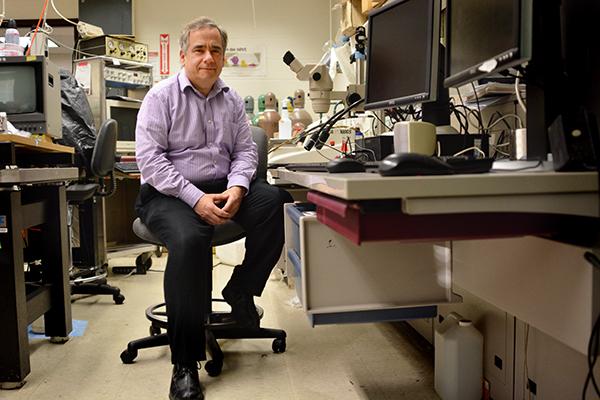GW’s researchers are working harder than ever to make sure your heart is healthy.
Cardiovascular research is expanding across the University, and faculty are taking advantage of a nationwide increase interest in the topic to further their own work. At least 20 faculty at GW are involved in heart-related areas of research, and three new hires in related fields this year means the University is better able to attract prominent names.
Nearly a decade after GW’s cardiovascular research institute launched, researchers are looking into the field as more Americans suffer from heart disease and other cardiovascular issues, said Kartik Bulusu, an assistant research professor in the department of mechanical and aerospace engineering. An estimated 82 million Americans suffer from heart disease.
“People die of heart attacks more than people are dying in road accidents,” Bulusu said. “When road accidents were happening, town planners and civil engineers threw their weight on it and then designed new road systems and traffic signals. It kind of came down to the point where it boils down to human errors.”
Bulusu, who works in a biofluid dynamics lab, which studies how blood travels through arteries, said it was important for researchers throughout GW to examine the same topic but through different lenses.
He said having the perspective of an engineer was essential when creating medical devices, and that the addition of GW’s biomedical engineering department could help to further collaboration between clinical medical faculty and engineering professors.
“Working on potential technologies for developing the next generation of devices – such as artificial hearts, stents, graft-mechanisms – requires creativity and strong engineering skills, which are coming from science and engineering departments,” he said.
Richard Katz, the director of cardiology at GW Hospital and the GW Heart and Vascular Institute, said about 15 cardiologists at the hospital are also faculty in the School of Medicine and Health Sciences.
As more faculty delve into heart research, GW is trying to stay ahead of a rapidly growing and evolving game, Katz said.
“We’ve been a consistent and prominent player in cardiovascular research,” he said. “It’s such a common problem but there are lots of challenges in trying to understand treatments.”
The Heart and Vascular Institute, which launched in 2006, has ties to former Vice President Dick Cheney, who, donated $2.7 million to help found the group. Katz said ties to figures like Cheney, whose cardiologist Jonathan Reiner works at GW Hospital and teaches at SMHS, help boost the institute’s reputation.
“If you’ve got prominent people showing that they’re interested in your program. The very fact that you have funds from them, you can then start fundraising and programming and raise from the first $1 million,” he said.
David Mendelowitz, vice chair of the department of pharmacology and physiology, said when so many researchers are interested in one topic, it can promote collaboration across departments.
He said that as funding for research becomes more competitive, it’s important for faculty to be able to identify projects that would require them to tackle one issue from two different perspectives.
“It’s a critical mass issue,” Mendelowitz said. “It’s like having good restaurants in D.C. If you have one good restaurant, that’s fine. But if you have four or five good restaurants, it becomes a place where people like to go.”
He added that the rise of prominent heart researchers helps fuel a growing field.
“It’s hard for one cardiovascular research project to be completed,” he said. “If you get three or four generated, the excitement feeds on itself.”







